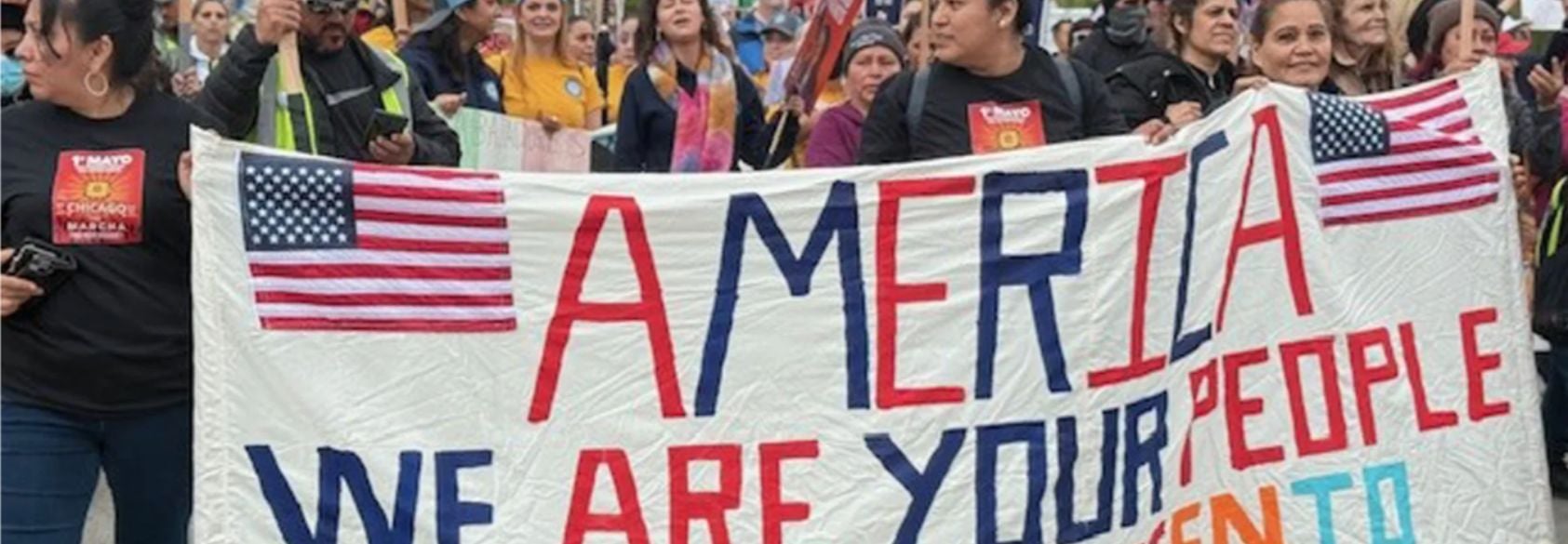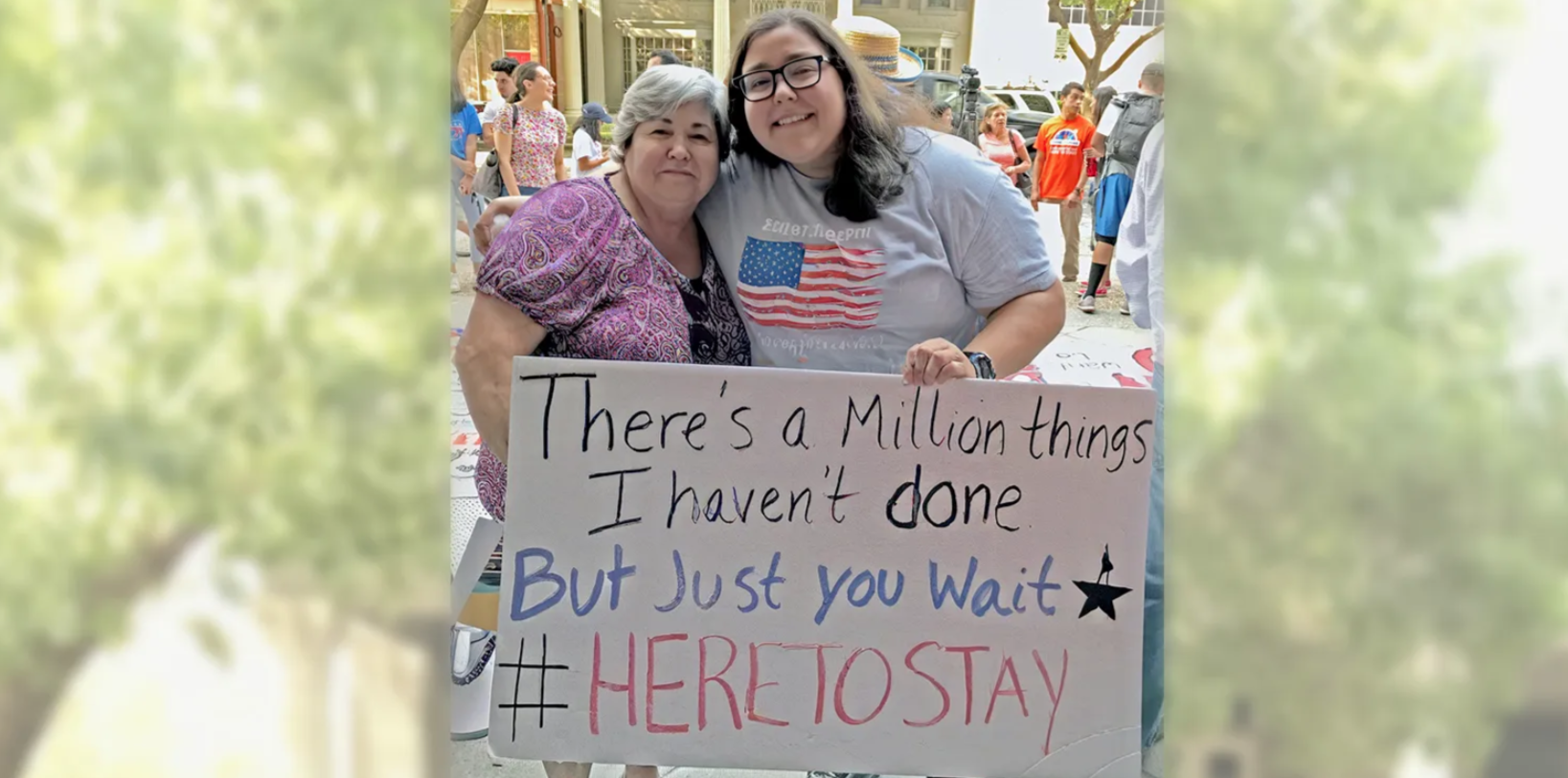Understanding Immigration: Glossary of Common Terms
Discover how immigration affects real families across generations. This blog blends storytelling, policy insight, and educational tools to spark deeper understanding—and action.

Migrant rights were front and center at May Day protests in 2025.
Share
June 12, 2025
Discover how immigration affects real families across generations. This blog blends storytelling, policy insight, and educational tools to spark deeper understanding—and action.
Share
Immigration policy is not just a hot-button issue, it is a life-threatening sea change for millions of people with whom we work. Families are being torn apart, legal residents — our neighbors — are being sent to prisons in foreign countries, and students are being arrested and deported for exercising their right to speak out. No one is safe, because if immigrants are treated without concern for the law, any resident is at risk.
There are so many changes in the way this country is treating immigrants — and the rest of us — it’s hard to keep up. To help us all navigate this new territory, the AFT has created a three-part guide: a glossary of common immigration terms, below; a guide to the threats we are facing (click here); and a list of the actions we have already taken to make this right (available here). And a follow up story on students facing deportation is here.
This word has been hijacked in recent times by Republican conservatives who use it to stifle progress on immigration legislation. President Reagan was the last U.S. president to successfully pass an amnesty program. Amnesty literally means “pardon,” so it can be misconstrued to mean a blanket pardon for anyone who has entered the country without legal status. This is not among the options for people seeking to remain residents in the United States; all routes to legal residency have strict requirements such as residency minimums, English language proficiency, fees and crime-free status, and are often limited to people from particular countries of origin.
DACA stands for Deferred Action for Childhood Arrivals. A person with DACA status is someone who was brought to the United States as a child and is granted permission to live, attend school and work here indefinitely — but not permanently. DACA has to be renewed every two years. No new DACA applicants are being accepted, but renewals are taking place. DACA does not provide a pathway to citizenship; citizenship must be pursued outside of DACA. The AFT has a number of members who have DACA, and many of our members interact with DACA students.

This is a term often used to describe undocumented students and people with DACA. It comes from the Development, Relief and Education for Alien Minors (DREAM) Act, a law that would have given them a path to legal residency. Congress has repeatedly failed to pass the DREAM Act and related versions of it since 2001.
This signifies that a foreign-born person is a “lawful permanent resident” or LPR, who can live, work and in some cases receive benefits in the United States. A person with a green card can also travel abroad and return freely. They cannot vote or hold office. Many people with green cards keep this status and never become U.S. citizens; often the reason is that they are intimidated by a complicated citizenship process.
This 1986 law was the last major overhaul of immigration law and allowed undocumented immigrants a pathway to adjust their immigration status by applying for temporary legal status. Applicants had to have been living in the United States continuously for four years, pay a fee and demonstrate good moral character. Permanent residence status was available to applicants if they met additional requirements.

Ruxandra Westra celebrating her United States citizenship after attending an AFT Citizenship Clinic.
Foreign-born people who are lawful permanent residents/hold a green card for five years (three years if they are married to a U.S. citizen) are eligible to apply for citizenship and become a naturalized citizen. To become citizens, they must show they can read, write and speak English and have knowledge of U.S. history. There is also a fee of $725 and required paperwork that can be onerous and confusing.
Temporary Protected Status, or TPS, is granted to people from certain countries based on how dangerous or difficult it would be to live there. Such places are experiencing armed conflict or natural disaster recovery from incidents like hurricanes and earthquakes. TPS is granted for 6, 12 or 18 months at a time and can be renewed. TPS holders are protected from deportation and can work legally in the United States. Seventeen countries currently have TPS status, including Venezuela, Honduras, El Salvador, Nicaragua, Haiti, Afghanistan, Sudan, Syria and Ukraine. TPS does not provide a pathway to citizenship; citizenship must be pursued outside of TPS.
When a child comes to the United States alone, unaccompanied, they typically are housed with a relative or an individual who has agreed to act as a sponsor. In the past, legal counsel has been available to them as they navigate the path to legal residence, but that counsel was recently revoked. There are records of unaccompanied children, so it is possible for Immigration and Customs Enforcement officers to track them down and target them for deportation.
Undocumented people live and work in the United States without a legal status. Not all undocumented immigrants crossed the border illegally. Some immigrants entered the country with a valid visa (student, tourist or work), and through the course of the years their visa expired. There are about 14 million undocumented immigrants in the United States, many of them working and raising families here, under the radar. They are at the greatest risk of being deported. Some can seek asylum, if their home countries are too dangerous for them to return to. To gain legal status, however, they usually have to return to their home countries and start over, applying for a visa, and they may never be able to return legally.
These are the most common visas the AFT encounters among its members and the students we serve. A full list of dozens of visa types can be found here.
For more terms, click here for a list from our friends at Children Thrive Action Network.
For more immigration information and resources from the AFT, click here.
Explore dozens of rich, engaging resources to teach about immigration policy, history, and awareness with preK-12 students.
Want to see more stories like this one? Subscribe to the SML e-newsletter!
Republished with permission from AFT Voices.
